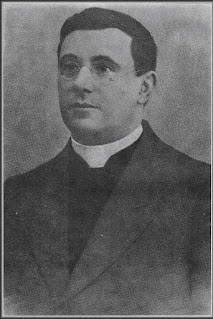Brave wife of Giuseppe Garibaldi was a freedom fighter
 |
| Anita Garibaldi met her future husband in Brazil and they married in Uruguay |
She was pregnant and also ill with malaria, but she was having to retreat from Austrian and French troops with the Garibaldian Legion. After her death, her body had to be hurriedly buried, and it was said to have been later dug up by a dog.
A Brazilian revolutionary, Anita had fought alongside Garibaldi in his campaigns, after meeting him in her home country in 1839.
She was born Ana Maria di Jesus Ribeiro in 1821 in Laguna in Brazil. She was the third of ten children born to a poor family. At the age of 14 she was forced to marry, but her husband later abandoned her to join the Brazilian Imperial Army.
Anita met Garibaldi, who was a sailor of Ligurian descent, after he had left Europe in 1836 and was fighting on behalf of the separatist Riograndense republic in southern Brazil. They fell in love immediately and she joined him on his ship, the Rio Pardo.
She soon saw military action in battles at Imbituba, and Laguna, during which she fought at the side of her lover.
Anita was said to have been a skilled horsewoman, who taught Garibaldi about the Gaucho culture of the Pampas of southern Brazil. It was claimed by one of Garibaldi’s comrades that she had the strength and courage of a man, with the charm and tenderness of a woman. She was reputed to have been very beautiful with an oval-shaped face and remarkable eyes.
During one battle, Anita and Garibaldi became separated and Anita was captured. Her guards told her Garibaldi was dead, but she did not believe them. She asked if she could search the battleground for his body and they agreed, but she could not find him, which gave her hope.
 |
| Garibaldi and Anita fought together in the defence of Rome in 1849 |
After they had given her up for dead, she spent four days wandering, without food or drink, in woodland in the area, until she encountered someone who gave her something to eat.
Eventually, Anita was able to get in touch with the rebels and she was reunited with Garibaldi in Vacaria.
A few months later, their first child, Menotti, was born. He had a skull deformity resulting from Anita’s fall from the horse, but he grew up to be a freedom fighter and accompanied Garibaldi on his campaigns in Italy.
In 1841, Anita and Garibaldi moved to Montevideo in Uruguay and they were married there in 1842. They went on to have another three children.
After Garibaldi took command of the Uruguayan fleet, Anita participated in his defence of Montevideo against Argentina in 1847.
Anita accompanied Garibaldi when he returned to Italy to join in the revolutions of 1848, where he fought against the Austrians.
In 1849, Garibaldi joined in the defence of the newly-proclaimed Roman Republic against Neapolitan and French intervention. But after Rome fell to the French at the end of June that year, Garibaldi and Anita found themselves forced to flee with their troops from the French and Austrian soldiers.
 |
| A magazine illustration imagines Anita with Garibaldi in the last moments of her life |
Anita Garibaldi is recognised as a national heroine in Brazil and has squares named after her and a museum dedicated to her memory,
In Italy, her legacy was used by Mussolini in 1932, when there was a discussion about removing Garibaldi’s statue from the top of the Gianicolo.
Mussolini not only refused to remove the statue of Garibaldi, but also said he would erect a statue of Anita Garibaldi on the same hill. The resulting statue depicted her mounted on a rearing horse holding her baby son close to her, while brandishing a pistol, as she leads her husband’s army to victory.
.jpg) |
| Garibaldi carries Anita through the Comacchio lagoons (Pietro Bauvier) |
Fattore Guiccioli, the farmhouse where Anita Garibaldi died in Mandriole, is in the countryside between Casal Borsetti and Sant’Alberto, just south of the lagoons of Comacchio. Garibaldi stumbled across the farmhouse while looking for shelter for him and Anita as they made their escape across Romagna. The building now houses an exhibition of relics and mementoes of Garibaldi’s flight through the area. There is a replica of Anita’s death bed, as the original one was burnt during the Nazi occupation of Italy during World War II, and there are two paintings dedicated to her. A memorial stone marks the site of her original burial place near the farmhouse.
 |
| The tomb of Anita Garibaldi on the Gianicolo hill in Rome, topped by an equestrian statue |
The Gianicolo, or Janiculum, one of the hills outside the walls of ancient Rome, has monuments to many Italian patriots who fought during the Risorgimento for the unification of Italy. It is regarded as one of the best locations to enjoy a scenic view of the centre of the city, with its domes and bell towers. When Anita’s statue was erected there in 1932, the event was celebrated with a three-day commemoration ceremony. On the first day, Anita’s remains were brought to Rome, on the second day, her remains were interred in the base of the monument built in her memory, which was placed near the equestrian statue of her husband, and on the third day, her monument was inaugurated officially by Mussolini.
Also on this day:
1463: The birth of banker Lorenzo di Pierfrancesco de’ Medici
1470: The birth of noblewoman Lucrezia Maria Romola de’ Medici
1590: The birth of Pope Urban VII
1994: The death of politician Giovanni Spadolini











.jpg)
.jpg)

.JPG)



















